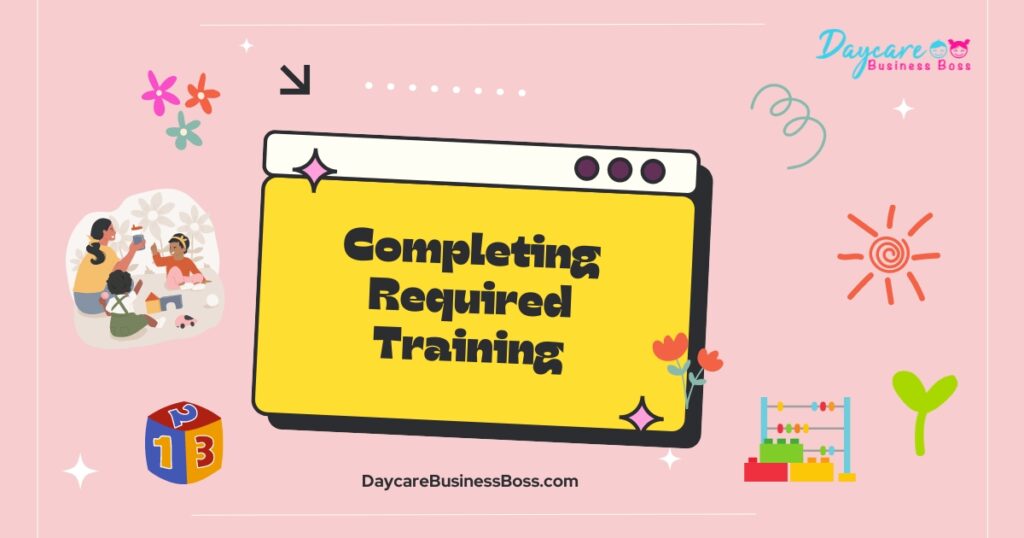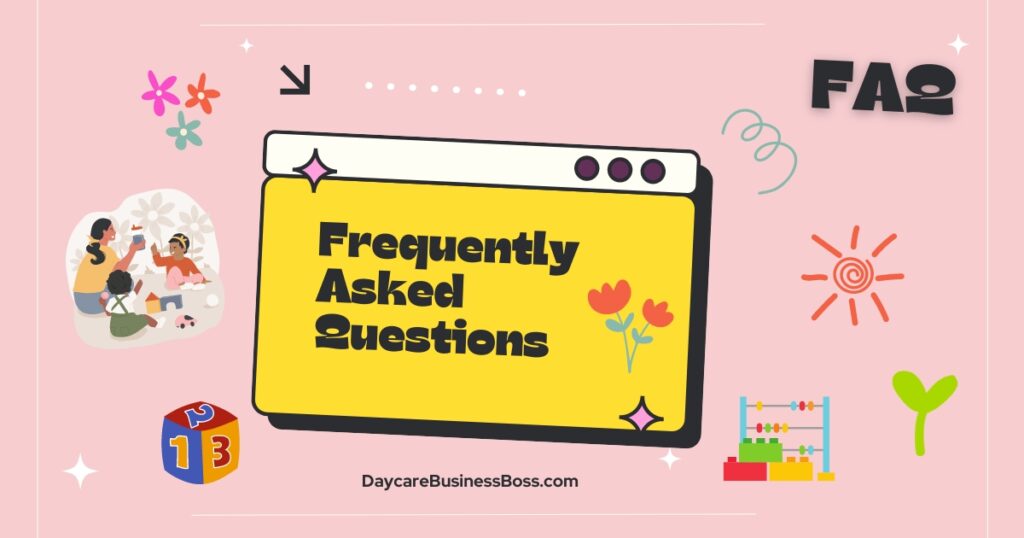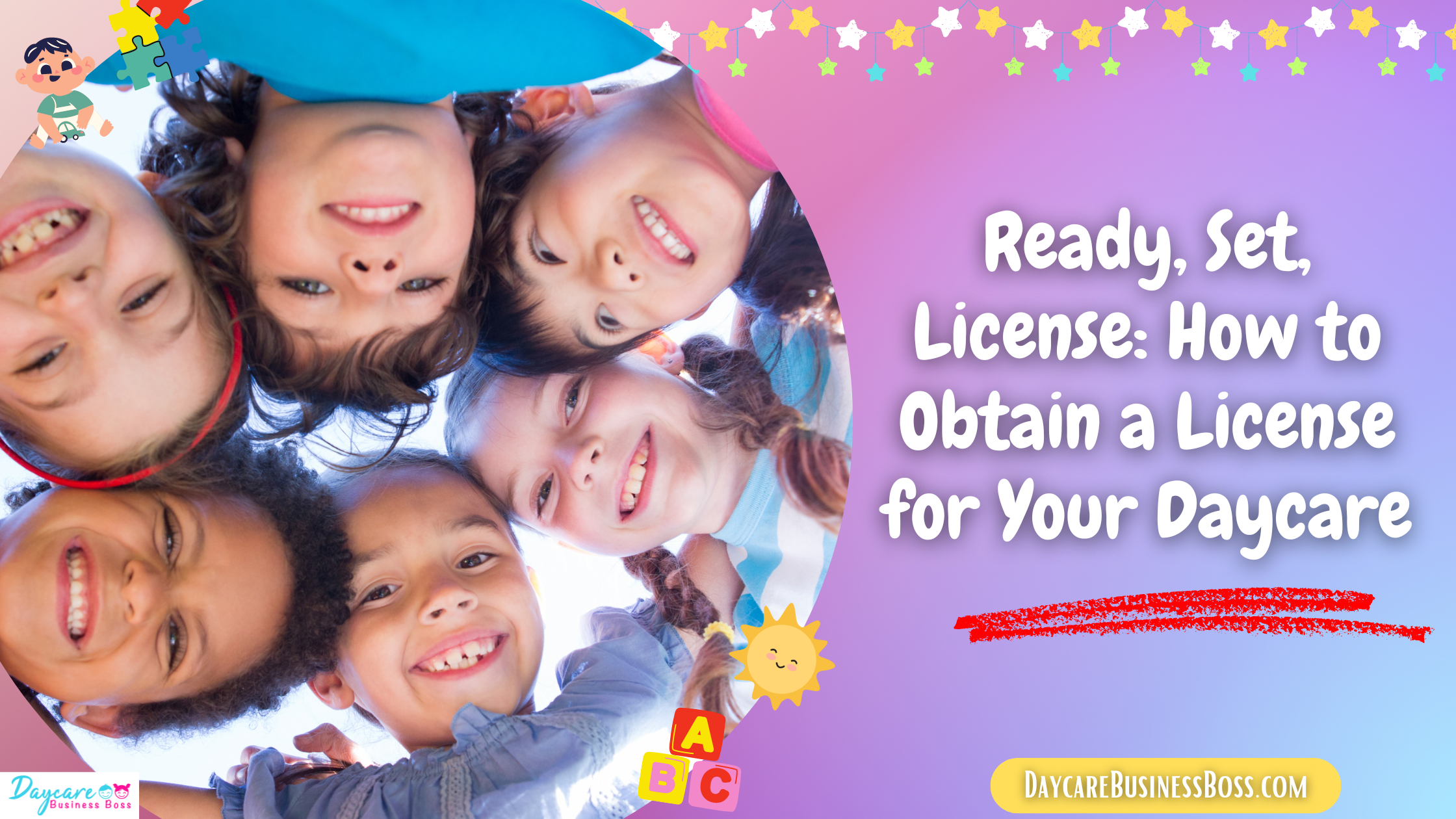As the demand for quality childcare services grows, so does the need of providing these services in a safe and regulated setting. This is when the daycare license application process comes into play. Understanding how to obtain certification to manage a daycare is an important step on your route to creating a space where children can grow, learn, and feel protected, whether you’re an aspiring childcare business or a dedicated caregiver.
To get licensed for a daycare, you should research local regulations, meet safety and space requirements, complete required training, background checks, and CPR certification apply with fees, and pass inspections.
This article will act as your guide, exposing the various stages needed in obtaining the required license. So, whether you’re a committed entrepreneur, a passionate educator, or someone driven by a genuine love for children, come along with us as we explore the path to licensure, ensuring that your daycare is more than just a dream, but a fully licensed reality.
Researching Local Regulations
Before you embark on the wonderful path of operating a daycare, there is a critical first step: understanding local legislation and standards. The process of getting a daycare license begins with a thorough study of the rules that govern childcare operations in your area.
Local restrictions have a significant impact on the framework within which your daycare will function. These regulations are not one-size-fits-all; rather, they are adapted to the specific needs and goals of each jurisdiction. This modification ensures that children’s safety, development, and well-being are emphasized in a way that is consistent with the values of the community.
One of the most important aspects addressed by these standards is staff-to-child ratios. These ratios define how many qualified caregivers are required for each group of children, ensuring that each child receives adequate attention and care. Such rules are intended to foster an environment in which every kid can thrive and attain their full potential while receiving the attention they deserve.
Another critical component of these rules is health and safety standards. To keep a clean and safe environment for children, proper sanitation, hygiene habits, and regular health screenings are required. Guidelines for childproofing the facility, putting hazardous products out of reach, and creating emergency response procedures all add to the overall safety of the childcare setting.
Daycare companies rely heavily on education, and municipal authorities frequently establish curriculum standards that emphasize age-appropriate learning and growth. These policies ensure that children are exposed to interesting and enriching activities that promote their cognitive, social, and emotional development.
By thoroughly researching and comprehending these rules, you lay the framework for a compliance daycare. This fundamental step demonstrates your dedication to creating a secure and supportive environment for the children in your care. It reflects not only your commitment to following legal obligations but also to establishing an atmosphere that fosters holistic development and supports the families in your community.
Read more about: Ready, Care, Grow: Your Daycare Startup Checklist
Meeting Safety and Space Requirements
Prioritizing the construction of a secure and nurturing environment for children is an unshakable imperative in the sphere of daycare operations. This dedication goes much beyond the requirements of the law; it speaks to the essence of responsible childcare.
The careful orchestration of a physical place that ideally balances safety and comfort is key to this endeavor. Adequate space distribution is critical in ensuring that children have enough area to move, explore, and participate in activities. This spatial arrangement promotes not only physical activity but also social connection and cognitive growth, laying the groundwork for a well-rounded learning experience.
Ventilation appears as a non-negotiable component of a favorable atmosphere. Proper ventilation is critical for keeping a healthy environment in the daycare center. Adequate ventilation not only reduces pathogen spread but also contributes to the children’s general comfort by creating a refreshing and invigorating environment.
Childproofing techniques serve as safety sentinels, protecting against possible hazards that can result from children’s natural curiosity and unlimited energy. Each cautious action, from securing electrical outlets to erecting safety gates and cushioning sharp edges, acts as a protective barrier, preventing accidents and creating a worry-free environment for both children and caregivers.
The development of comprehensive fire safety standards is an essential component of competent childcare administration. A strong defense against potential fire dangers includes evacuation plans, fire extinguisher installation, smoke detectors, and clear emergency exit routes. These precautions, which have been methodically interwoven into the arrangement of the daycare, generate a sense of preparedness that is critical for assuring the children’s safety and the caregivers’ peace of mind.
Beyond the area of legislation, observing safety and space standards demonstrates your dedication to the children’s well-being. It demonstrates your commitment to creating an atmosphere in which children can explore, learn, and develop without jeopardizing their safety.
Completing Required Training

Continuous learning is a key pillar in the field of childcare provision, as it sustains the quality of care and fosters the growth of the young minds entrusted to your care. Daycare providers are more than just caregivers; they are educators, mentors, and guardians of a key stage in a child’s development. Recognizing their critical role, specific training programs have been developed to improve their abilities and broaden their understanding of child development, making their contribution vital.
These training programs weave a rich tapestry of varied themes that contribute to a holistic approach to childcare. The range they cover is as diverse as it is important. Health and hygiene are prioritized since they not only protect children’s well-being but also teach habits that can last a lifetime. Another pillar is nutrition, which provides caregivers with the knowledge to deliver balanced and nutritional meals that drive growth and maintain energy levels.
Behavior management emerges as an art that demands dexterity and awareness. This type of training enables caregivers to understand and handle the complex dynamics of child behavior, establishing a compassionate and supportive environment in which children can develop emotionally and socially.
The heart of these training programs is early childhood education. Daycare providers uncover unique ways to engage young brains, inspire curiosity, and lay the groundwork for a lifelong love of learning through this educational element. This is the stage when caregivers shift from supervisors to growth facilitators, establishing the framework for the children’s educational journey.
Among these essential components, first aid knowledge stands tall as a protective barrier. Accidents are unavoidable, and being prepared to respond quickly and efficiently can make a huge difference in the outcome. First aid training ensures that caregivers can administer emergency care while waiting for expert medical assistance, giving parents peace of mind that their children are in skilled hands.
Background Checks and CPR Certification
Safety is paramount in childcare operations, and ensuring the well-being of the children entrusted to your care is a non-negotiable responsibility. This is not only a moral commitment, but also a legal one. Most licensing authorities need a thorough background check for daycare providers and staff members to reinforce this commitment.
The background screening process acts as a safeguard, painstakingly investigating the history of those who will have intimate contact with the children. This involves looking into criminal records, previous employment, and references. The primary goal is to identify any potential red flags or problems that could jeopardize the children’s safety. By recognizing these factors, licensing authorities ensure that only individuals with clean histories and the greatest integrity are given the responsibility of childcare.
Obtaining CPR and first aid certification is also an important aspect of safeguarding child safety. Accidents can happen in any situation, even a daycare center. Having these life-saving abilities allows caregivers to respond quickly and efficiently to crises ranging from small injuries to more serious catastrophes. This preparedness reduces dangers and offers a sense of security for parents, knowing that their children are in the hands of people who can manage unexpected events with skill and calm.
These certificates act as a quality assurance stamp. Parents place a great deal of trust in daycare providers, and knowing that the staff is trained to provide prompt medical treatment in urgent situations provides a sense of security and confidence. It transforms the childcare setting from a place of ordinary supervision to a safe sanctuary where each child’s well-being is prioritized.
Read more about: Ready to Open a Home Daycare? Follow This Startup Checklist
Submitting an Application with Fees
With a clear understanding of local rules, a commitment to high safety standards, and a thorough suite of training and certificates under your belt, you’re ready to begin the daycare licensing process. This process represents the transition from planning to action, changing your dreams into an actual reality.
The submission of a properly crafted application to the relevant licensing body is at the heart of this phase. This application acts as your formal introduction to the regulatory authority, presenting them with critical information about your daycare service. This is more than simply a routine activity; it demonstrates your commitment to maintaining the best standards in childcare.
The application is a detailed document that digs into the specifics of your daycare. It necessitates a detailed depiction of your curriculum, outlining the activities, learning methodologies, and experiences you aim to provide the pupils. It explains your staff’s qualifications, emphasizing their knowledge and experience, assuring both the regulatory body and parents of the children’s safety.
Policies and procedures are crucial components of the program, providing insight into the organized environment you’re developing. From health and safety regulations to operating rules, these policies demonstrate your dedication to providing a nurturing and secure environment for children.
As you begin the licensing procedure, it is critical to budget for licensing payments. These fees, which may vary depending on your location and the size of your childcare operations, are an investment in the legitimacy and reputation of your venture. They help to keep regulatory monitoring in place by ensuring that all daycare providers conform to the highest quality and care standards.
Passing Inspections
The final leg of your route to acquiring a childcare license includes a vital phase: rigorous inspections conducted by regulatory authorities. These assessments are the final line of defense, ensuring that your daycare center meets the highest standards of safety, quality, and care.
During these inspections, every aspect of your daycare operation is scrutinized. The physical environment is thoroughly examined, including elements such as space distribution, layout, and equipment. Safety precautions are evaluated to ensure that they properly protect children from potential dangers and emergencies. Inspectors investigate your staff’s qualifications, seeking evidence that they have the knowledge and expertise required for the role they perform in the lives of children.
Cleanliness is more than a surface concern; it reflects the total care and management of the environment. Regulatory bodies analyze your compliance with regulations by evaluating how well your policies and procedures correspond with the guidelines established.
Precision is your ally when it comes to preparing for these examinations. Every detail counts, and addressing potential faults or concerns before inspectors arrive will greatly increase your chances of acquiring the coveted license. This proactive approach demonstrates your dedication to continual improvement and your readiness to go above and beyond to ensure that the children in your care are safe and nurtured.
Inspectors are not adversaries; they work together to ensure the highest standards of childcare. Viewing inspections as a chance for validation and growth might help to simplify the process. Take their feedback seriously, as it provides insights into areas that can be improved to improve the overall quality of your daycare.
Frequently Asked Questions

What are the most important safety and space requirements for my daycare facility?
It is critical to provide a safe and appropriate environment for children. Specific criteria for space distribution, ventilation, childproofing, and fire safety procedures should be followed by your childcare center. These criteria are in place to reduce potential risks and offer a safe environment for the children in your care.
What education and qualifications do I need to run a licensed daycare?
To run a licensed daycare, you must normally undergo training in areas such as child development, health and cleanliness, behavior management, and nutrition. Obtaining CPR and first aid certificates is also necessary for properly addressing situations and protecting the children’s well-being.
How long does the childcare licensing procedure typically take?
The length of the licensing process can vary depending on factors such as your location, the thoroughness of your application, and the regulatory agency’s efficiency. All of the necessary stages, such as researching rules, completing standards, receiving training and certificates, filing an application, and passing inspections, might take several months on average. It is best to begin the procedure as early as possible to guarantee a smooth transition into running a licensed daycare.
To learn more on how to start your own daycare checkout my startup documents here.
The information provided by DaycareBusinessBoss.com (“The Site”) is for general informational purposes only. All information on the Site is provided in good faith, however, we make no representation or warranty of any kind, express or implied, regarding the accuracy, adequacy, validity, reliability, availability or completeness of any information on the Site. Under no circumstance shall we have any liability to you for any loss or damage of any kind incurred as a result of the use of the Site or Reliance on any information provided on the Site. Your use of the Site and your reliance on any information on the Site is solely at your own risk.
This blog post is for educational purposes only and does not constitute legal advice. Please consult a legal expert to address your specific needs. Terms and Conditions. (https://daycarebusinessboss.com/terms-conditions/)

Meet Shawn Chun: Entrepreneur and Childcare Business Fan.
I’m a happy individual who happens to be an entrepreneur. I have owned several types of businesses in my life from a coffee shop to an import and export business to an online review business plus a few more and now I create online daycare business resources for those interested in starting new ventures. It’s demanding work but I love it. I do it for those passionate about their business and their goals. That’s why when I meet a childcare business owner, I see myself. I know how hard the struggle is to retain clients, find good employees and keep the business growing all while trying to stay competitive.
That’s why I created Daycare Business Boss: I want to help childcare business owners like you build a thriving business that brings you endless joy and supports your ideal lifestyle.

